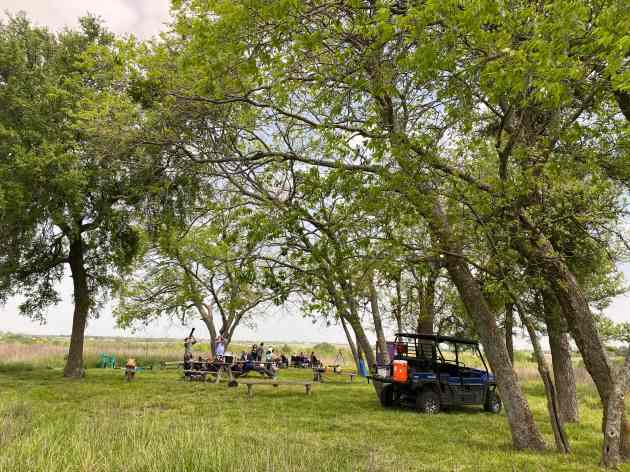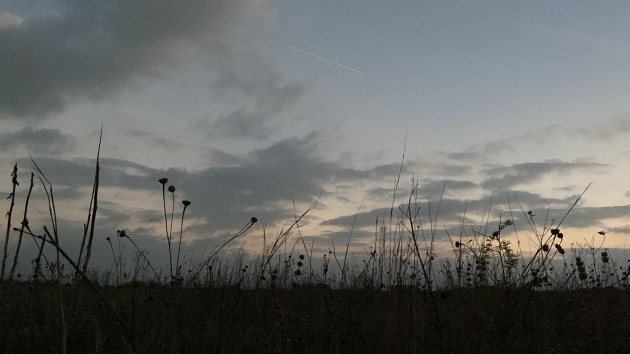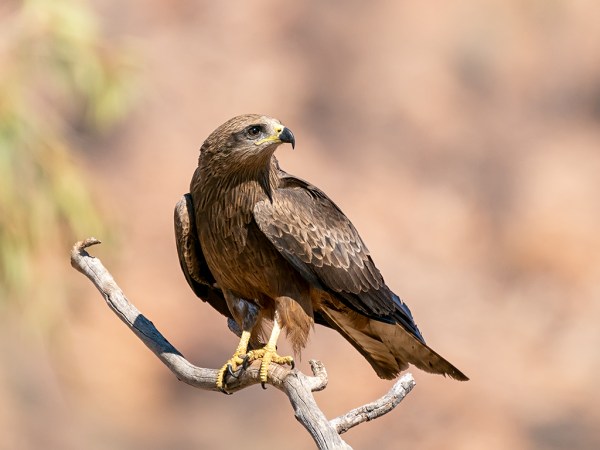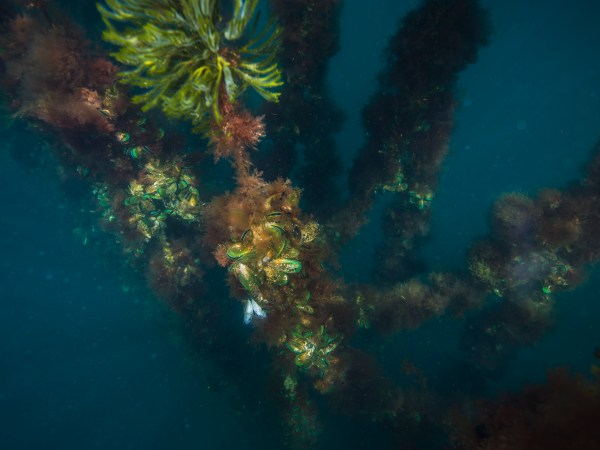It feels a bit like a cosmic joke.
Standing on a hillside in North Texas among a crowd gathered from near and far, I look up at the sky—covered completely with gray clouds—searching in vain for a glimpse of the sun. It’s an unusual predicament here in North Texas. In the heat of the summer or the hours before a gathering storm—our current situation—you normally look for shelter.
But today, the first time a total eclipse will cross this part of the state since 1878, a group of about 70 strangers are standing on a hilltop—acres of open prairie all around us—desperately waiting for the clouds to part.
I had come to this pocket of prairie 45 miles northeast of Dallas to join an eclipse-viewing party at The Nature Conservancy’s Clymer Meadow Preserve. Besides providing a wide-open space for the ancient celestial event on everyone’s minds, the preserve is something of a relic too.
Looking at the Past, and the Future
At about 1500 acres, the preserve protects one of the largest remaining contiguous chunks of blackland prairie in existence. Some of it has never been ploughed. Named for the dark color of its clay soil, blackland prairie is a type of tallgrass prairie—itself a deeply threatened ecosystem that stretches up the eastern side of North America’s Great Plains. Today, less than one-tenth of 1% of the blackland prairie that once stretched in a band across Texas remains intact, the preserve manager Brandon Belcher tells me.
“This is just a representation of something that is [nearly] gone,” he says.
It’s not hard to imagine that. Standing on the hilltop under a copse of cedar elm and hackberry trees, I don’t need my binoculars to see the homes in the distance, one under construction right now. On the other side of a fence, I can see cows grazing on the property next door.
“We’re watching the North Texas urbanization marching towards us,” Belcher says. “In 10 or 20 years, this will be a pretty different space out here.”
At the moment though, the space feels wide and remote. Bees flit around the dried over-wintered grasses and flowers. Only a few have yet awoken and begun to bloom this spring. The tiny violet flowers of blue-eyed grasses and the vibrant sweep of purple paintbrushes peek out among the brown and green of the fields.

People have gathered from all over. One woman drove an hour in the middle of her workday to experience the eclipse in a wild space. Half a dozen or so members of a single family have come from Florida, Oklahoma and other parts of Texas.
“It’s as good a reason to meet up as any,” one man tells me.
There are picnic blankets and lawn chairs, baskets of food and coolers. It feels like a small tailgate party for the sun.
We mill around, swapping tips about photographing the eclipse and what we’re hoping to see. One woman demonstrates how to use a colander to view shadows on the ground.
My First Totality
I, like so many here, have only experienced a partial eclipse. I watched in awe from the National Mall in Washington, DC, in 2017 as the moon covered 80% of the sun that day. One family tells me they’ve watched annular eclipses together before but never a total solar eclipse. In an annular eclipse, the moon covers the sun but because it is farther from Earth it appears smaller and leaves a ring of fire visible around its edges. Today, we’re all hoping to see the corona—the outermost edge of the sun’s atmosphere—which becomes visible during a total solar eclipse.
Suddenly, amid all our chatter, someone gasps.
The clouds have parted just enough for the sun to peek through. I put on my glasses and look up. The sun looks like a cookie with a bite taken out of it.

“Oh, that’s so beautiful,” I hear. And it has only begun.
Over the next half-hour we spread out in the field, claiming our spaces among the wild grasses. We wait.
Slowly, slowly the world goes a bit hazy and then all at once it’s twilight.
Cheers erupt behind me and someone shouts, asking if it’s okay to take off our eclipse glasses. We all do. In the dark blue sky above, the sun shines like a weaker star, a white halo glowing around a large black dot. The corona. On either side of it, Venus and Jupiter are suddenly bright and visible.
I listen to the world around me. Save for the gasps of awe, the prairie is quiet. Two birds chirp in a nearby tree. I learn later that the temperature dropped two degrees.
Sitting here among this ancient prairie, grasses growing up all around me, and the black clay soil at my feet, I try to take it all in. What must it have felt like to those centuries ago to not know this was coming? The land here, though unploughed, was not untouched. Bison once roamed here. Fires blew through, burning the prairies and keeping the encroaching forests at bay. People have lived among these acres for thousands of years. I wonder what they thought of the suddenly black suns of the past.

Just as quickly as it became dark, the world is bright again, like a mid-day sunrise. The cows on the property next door moo loudly.
“They’re ready for breakfast again,” someone says behind me. “They’re confused.”
Later as we all begin to leave, I pass by Tom Shackelford, a Texas Master Naturalist who organizes volunteers at the preserve. He’s showing a couple people an area of the preserve where gilgai (or hogwallows as they’re called locally) are present. These large depressions in the ground form naturally in this type of soil. They collect water in a dry landscape—and are difficult to restore—but they’re often removed by ranchers and developers looking for flat ground. Shackelford is hoping the eclipse has brought future volunteers to this space and to the Texas prairies.
It’s a hope that Belcher shares too. “Regardless of the eclipse, this is a whole new set of people to talk to about prairies and conservation work here in Texas,” he says. “I’m excited about that.”
From April to June, Clymer Meadow Preserve hosts three wildflower tours. Click for schedules, RSVP and details.




Join the Discussion